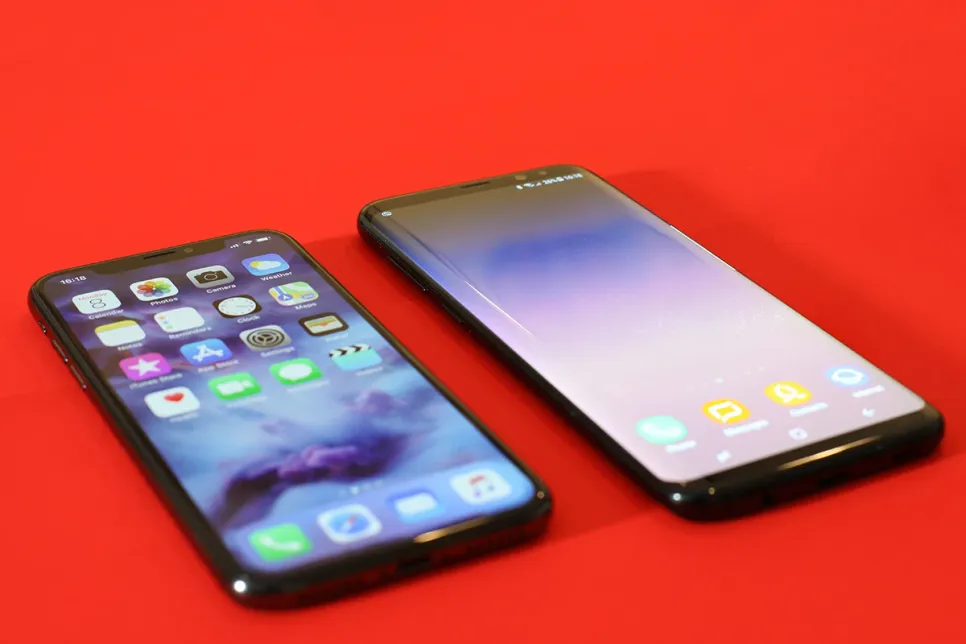Embedded Finance Market to Surpass $228 Billion by 2028
A new study from Juniper Research has found that by 2028, embedded finance revenue will increase 148%, from $92 billion in 2024 to $228 billion in 2028.

A slower than expected 2017 holiday quarter closed out the year bringing minimal change to the worldwide smartphone market when compared to 2016, according to IDC.
Smartphone vendors shipped a total of 403.5 million units during the fourth quarter of 2017 (4Q17), resulting in a 6.3% decline when compared to the 430.7 million units shipped in the final quarter of 2016. For the full year, the worldwide smartphone market saw a total of 1.472 billion units shipped, declining less than 1% from the 1.473 billion units shipped in 2016. Developed markets such as China and the United States both witnessed a decline during the quarter as consumers appeared to be in no rush to upgrade to the newest generation of higher-priced flagship devices.
Apple experienced a slight downturn from the previous holiday quarter as iPhone volumes reached 77.3 million units, a year-over-year decline of 1.3%. Volumes were still enough to push Apple past Samsung and back into first place in the smartphone market, largely because of iPhone 8, 8 Plus, and iPhone X. Although demand for the new higher priced iPhone X may not have been as strong as many expected, the overall iPhone lineup appealed to a wider range of consumers in both emerging and developed markets. Apple finished second for the full year in 2017 shipping 215.8 million units, up 0.2% from the 215.4 million units shipped in 2016.
Samsung remained the overall leader in the worldwide smartphone market for 2017 despite losing out to Apple in the fourth quarter. The Korean giant shipped 74.1 million units in 4Q17, down 4.4% compared to the 77.5 million units from last year. Samsung finished the year with 317.3 million shipments, up 1.9% from the 311.4 million shipments in 2016. The pending arrival of their next flagship, the Galaxy S9, may represent the brand's best chance of winning over both new and current customers in 2018.
Huawei continues to hold the number three position despite intensified competition from growing Chinese players such as OPPO and Vivo. Huawei shipped 41.0 million units, down 9.7% from the 45.4 million shipped in the fourth quarter of 2016. Huawei shipped 153.1 million units, up 9.9% from the 139.3 million unit shipped in 2016. Recent aspirations for breaking into the U.S. market are on hold as both AT&T and Verizon recently cut ties to bring Huawei flagships to the U.S. Entering the U.S. through an official carrier remains critical for Huawei if it wishes to eventually dethrone market leaders Apple and Samsung.
Xiaomi managed to double its share to 7% from 3.3% during the holiday quarter last year. This comes as no surprise since the company has continued to focus on growth outside China, with India and Russia being two of its largest markets. The brand continued to expand its retail presence by adding more preferred partners, launching new Mi stores, and partnering with large format retail stores.
OPPO dropped one place to the 5th position as the company shipped 27.4 million smartphones while managing to maintain 12% growth for the full year, amounting to 111.8 million smartphones. Like Xiaomi, OPPO has also managed to move beyond the domestic Chinese market and gain a foothold in other Asian countries like India, Indonesia, and Vietnam.
Top Five, Q4 2017 Preliminary (shipments in millions) | |||||
Company | 4Q17 Shipment Volumes | 4Q17 Market Share | 4Q16 Shipment Volumes | 4Q16 Market Share | 4Q17/4Q16 Change |
1. Apple | 77.3 | 19.2% | 78.3 | 18.2% | -1.3% |
2. Samsung | 74.1 | 18.4% | 77.5 | 18.0% | -4.4% |
3. Huawei | 41.0 | 10.2% | 45.4 | 10.5% | -9.7% |
4. Xiaomi | 28.1 | 7.0% | 14.3 | 3.3% | 96.9% |
5. OPPO | 27.4 | 6.8% | 31.6 | 7.3% | -13.2% |
Others | 151.3 | 38.6% | 183.7 | 42.7% | -17.6% |
Total | 403.5 | 100.0% | 430.7 | 100.0% | -6.3% |
Top Five, 2017 Preliminary (shipments in millions) | |||||
Company | 2017 Shipment Volumes | 2017 Market Share | 2016 Shipment Volumes | 2016 Market Share | Year-Over-Year Change |
1. Samsung | 317.3 | 21.6% | 311.4 | 21.1% | 1.9% |
2. Apple | 215.8 | 14.7% | 215.4 | 14.6% | 0.2% |
3. Huawei | 153.1 | 10.4% | 139.3 | 9.5% | 9.9% |
4. OPPO | 111.8 | 7.6% | 99.8 | 6.8% | 12.0% |
5. Xiaomi | 92.4 | 6.3% | 53.0 | 3.6% | 74.5% |
Others | 577.7 | 39.5% | 654.5 | 44.4% | -11.7% |
Total | 1472.4 | 100.0% | 1473.4 | 100.0% | -0.1% |